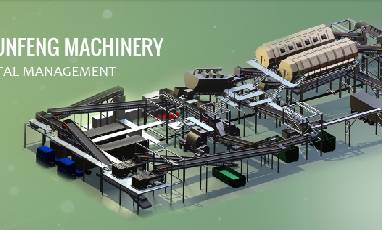China mobile waste sorting machine supplier shares this article for you
Operation and maintenance of garbage transfer station: 70 hours of operation is focused on tightening and lubrication
(1) Whether the flange connecting bolts of the compression cylinder and the connecting bolts of the frame is loose;
(2) Check the connecting bolts, joints, pipe hoops, pipe clamps, etc. in each part of the tightening hydraulic system, and check for oil leakage;
(3) The quantity of hydraulic oil should ensure that the oil level of the hydraulic oil is above the centerline of the liquid level gauge. If the superior position is significantly reduced, the oil tank, valves, and tubing should be checked for damage and repaired in time until they can work normally ;
(4) Check whether the sliding parts such as the indenter, the guide device of the compression storage tank, the piston rod of the oil cylinder, and the bearing of the support frame are flexible, and the standard brand of lubricating oil should be injected regularly.
500h maintenance of garbage transfer station operation: focus on adjustment during 500h operation
(1) Check whether the clearance of the guide roller is appropriate, and adjust it if necessary;
(2) Check the wear of the push plate and sly roller, replace if necessary;
(3) Check if there is any slight deformation of the parts in each working device, if necessary, correct it;
(4) Check whether the hydraulic components can work normally, dismantle or replace if necessary, if there is oil leakage, replace the seals;
(5) Hydraulic oil: Observe whether it is dirty or deteriorated. If the hydraulic oil is in poor condition, the hydraulic oil should be replaced;
(6) Retighten all bolts on the machine;
Refuse transfer station operation 2000h maintenance: Operation 2000h maintenance focuses on comprehensive technical inspection and adjustment of the operation device to eliminate hidden dangers.
(1) Check whether the travel switch is reliable and replace it if necessary;
(2) Check and repair all welds, especially the welds in important parts;
(3) Check the wear and operation of parts of each device, and replace those with serious wear and operation;
(4) The hydraulic components should be disassembled and inspected by technicians familiar with the hydraulic transmission. The disassembly should be carried out in strict accordance with its regulations and must not be disassembled at will. Check the damage of parts, replace the severely damaged ones, and replace the whole components if unconditional. If the performance of the component drops seriously, the entire component should also be replaced. The seals in the hydraulic components depend on the situation and are replaced if necessary;
(5) Clean the hydraulic oil tank, each oil filter, air filter, and hydraulic pipeline, replace the hydraulic oil, and replace the seals and hoses with abrasive damage. ,
